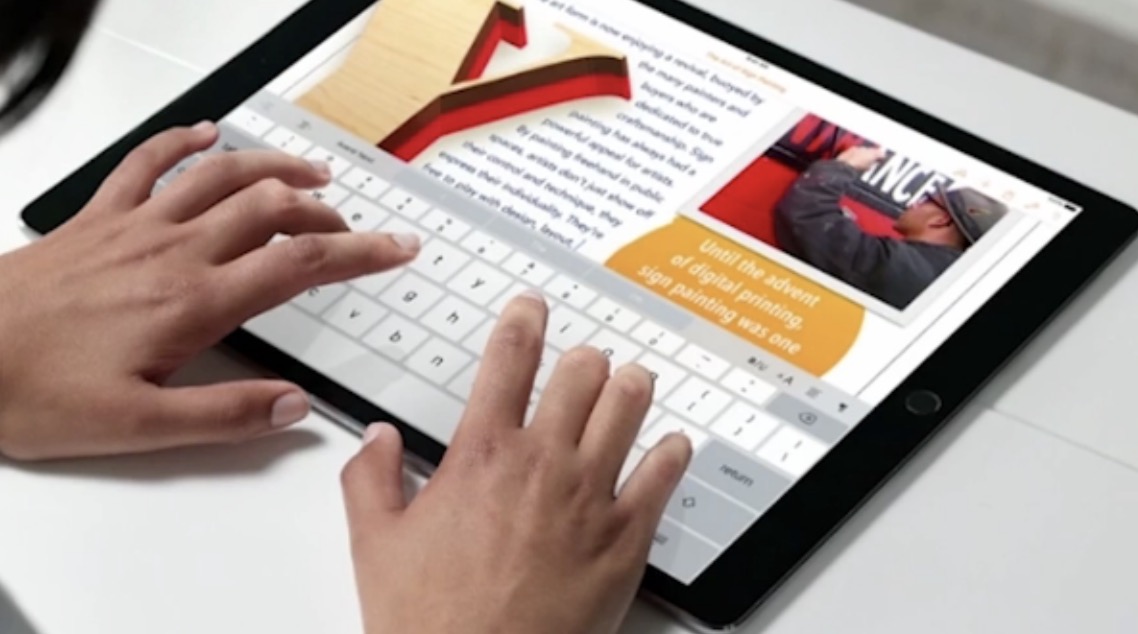This past week I have been supervising the hand-out of new 1:1 technology to our students. It isn’t the first time I’ve done this, but this year I wanted to take a particularly strong hands-on role with the roll-out or deployment, as we call it, of devices. I did several introductions to high school students, and when it came to our elementary students, I enjoyed seeing how quickly fifth graders took back to their iPads.
But most fascinating was watching the third graders.
We use iPads and students use the on-screen keyboard. Our early forays into using iPads at the middle school level taught me that students, with daily use, could quickly become quite proficient at typing with the on-screen keyboard (at landscape mode) at a speed that impressed me. I never attempted to measure the speed, but it was impressive enough at the time to inspire me to think that I’d never seen students on borrowed laptops type that fast in the 8th grade.
So today our third graders, who had plenty of iPad experience in the 2nd grade using individual iPads that stayed in the classroom, got a spiel from me and my associates on caring for the iPad. Rules on how to take care of it. And then we all signed into our accounts and kicked the tires on the devices.
And there they were: eighteen kids, spread around a media center, looking for the symbols on the keyboard they needed to type in order to login to their accounts. Last year they’d used Seesaw. This year it would be Google Drive and Schoology. There were a few students who were pros. I knew they must have devices at home. The QWERTY keyboard was nothing new.
But for so many, it was something new, that keyboard, hunting, and pecking for the right symbols. “Which one is my password?” “Is this an e-mail address?” “How will I ever remember this?”
It’s easy for some of us to remember a long string if we know the formula.
Their user accounts look like an e-mail address, complete with an @ symbol. We explained the formula. The number. The last name. The first initial. The @ symbol. Then our division’s geographical domain name. You could see the smiles on some faces as a once unintelligible string of symbols started to make sense. But I was far more interested in watching them type.
Some students had no real clue where the right letters were. Some needed help adjusting the keyboard to display numbers. No one was yet an expert.
Yet, the day before, watching 5th graders, they input those addresses faster than I could compute. They knew where all the letters were. They were masters of the on-screen keyboard.
Did we teach them? Not directly. We don’t use any kind of typing program. It’s only through daily use (or we could say daily practice) that they master the keyboard.
“Third graders. Behold. Today as I watch you all type these new addresses in, you all are a bit slow. The addresses seem very long. This is all brand new. By the time you’re in the fifth grade, you’ll be speed demons. Trust me. All it takes is some practice.”
As an educator, and a former music student, I should have expected as much. Play your scales enough and you’ve mastered them. The keyboard, virtual or real, wasn’t terribly different. But the powerful reminder was that there are things we’ll do over and over that will just come with time. Mastery takes practice. Seeing a fifth grader assimilate to their daily device in just a few minutes helped reinforce the power of the 1:1 program, that students would come to use this tool as a daily amplifier of their potential. Maybe not yet with the finesse a top chef has with their knives, these students are well on their way to bending these tools to help them ask questions, dream in different and interesting ways, and write what they will through taps on glass.
Sometimes our jobs are as simple as providing the opportunities for experience, for practice. We can always get better, and we will.

